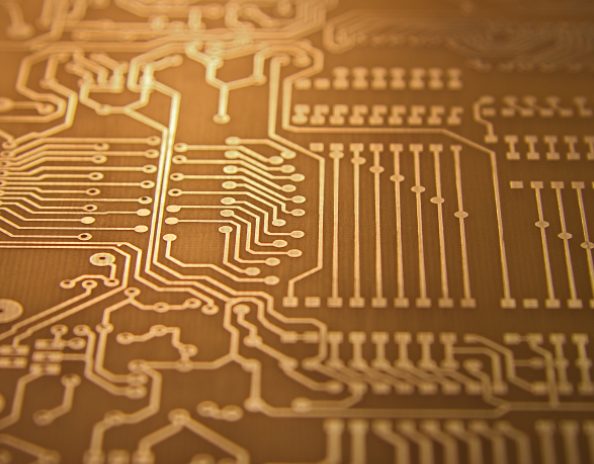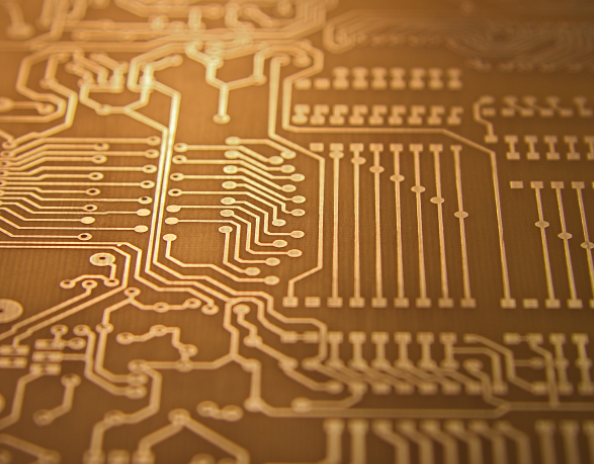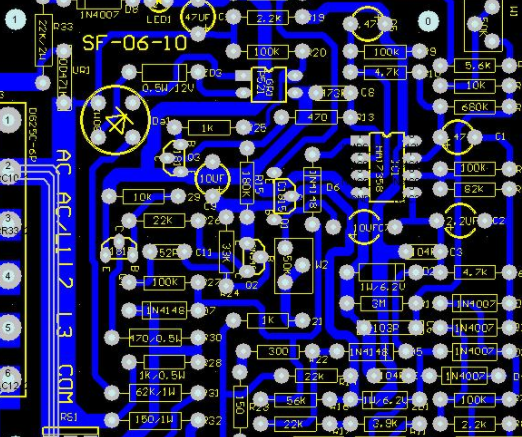
How to make a good PCB
Everyone knows that PCB board is to turn the designed schematic into a real PCB board Please do not underestimate this process There are many things that are feasible in principle, but difficult to achieve in the project, or others can achieve, but others cannot Therefore, make a PCB, but make a good PCB The two main difficulties in the field of microelectronics are the processing of high frequency signals and weak signals In this regard, the level of PCB production is particularly important The same principle design, the same components, and the PCB produced by different people have different characteristics As a result, how can we make PCB? Based on our past experience, we would like to share our views on the following aspects:
PCB board
1. Define your design goals
When accepting the design task, first of all, we should make clear the design goal, which is ordinary PCB, high-frequency PCB, small signal processing PCB, or PCB with both high-frequency and small signal processing. For ordinary PCB boards, as long as the layout and wiring are reasonable and orderly, and the mechanical dimensions are accurate, if there are medium load lines and long load lines, certain measures must be taken to reduce the load. When the signal lines on the circuit board exceed 40MHz, special consideration shall be given to these signal lines, such as crosstalk between lines. If the frequency is high, the wiring length will be subject to more stringent restrictions. According to the distributed parameter network theory, the interaction between high-speed circuits and their routing is a decisive factor, which cannot be ignored in system design. As the gate transmission rate increases, the objections on signal lines will increase accordingly, and the crosstalk between adjacent signal lines will increase proportionally. In general, the power consumption and heat dissipation of high-speed circuits are also large. When manufacturing high-speed PCB, pay full attention to the circuit board. When there are weak signals of millivolt level or even microvolt level on the circuit board, special attention should be paid to these signal lines. Since small signals are too weak to be easily interfered by other strong signals, shielding measures are usually required. The signal-to-noise ratio is greatly reduced. Recall that useful signals are overwhelmed by noise and cannot be effectively selected. The board commissioning shall also be considered in the design stage. Factors such as the physical location of the test point and the isolation of the test point cannot be ignored, because some small signals and high-frequency signals cannot be directly added to the probe for measurement. In addition, other relevant factors should be considered, such as the number of layers of the board, the packaging shape of the components used, and the mechanical strength of the board. Before making a PCB, you must understand the design objectives of the design.
2. Understand the layout and wiring requirements of the used component functions
We know that some special components have special requirements for layout and wiring, such as analog signal amplifiers used in LOTI and APH. Analog signal amplifiers require a stable power supply and small ripple. The analog small signal part shall be as far away from the power supply equipment as possible. On the OTI board, the small signal amplification part is also specially equipped with a mask to mask stray electromagnetic interference. The GLINK chip used on the NTOI board uses the ECL process, which consumes a lot of power and generates heat. Special consideration must be given to heat dissipation in the layout. If natural heat dissipation is used, the GLINK chip must be placed at a place where the air circulation is relatively stable, and the heat dissipation will not have a great impact on other chips. If loudspeakers or other high-power equipment are installed on the board, it may cause serious pollution to the power supply, and enough attention should also be paid.
3. Notes on component layout
One of the first considerations in component layout is power efficiency. Components closely related to wiring shall be put together as much as possible. Especially for some high-speed lines, the layout should be as short as possible. Power signal and small signal devices shall be separated. On the premise of meeting the circuit efficiency, it is also necessary to consider the orderly and beautiful placement of components for easy testing. It is also necessary to carefully consider the mechanical size of the circuit board and the location of the socket. The grounding and propagation delay time of high-speed system interconnection are also the primary considerations in system design. The transmission time on the signal line has a great influence on the speed of the whole system, especially on the high-speed ECL circuit. Although the speed of the integrated circuit block itself is very high, the 2ns delay will increase the delay time due to the use of ordinary interconnection lines (each line is about 30cm long) on the backplane, which will greatly reduce the system speed. Synchronous working parts such as displacement registers and synchronous counters are placed on the same workpiece board. Because the transmission delay time of clock signals to different workpiece boards is not equal, this may lead to the main error of the displacement registers. For boards, when synchronization is critical, the length of clock lines from the common clock source to each board must be equal

4. Wiring precautions
With the completion of OTNI and star fiber network design, more boards with high-speed signal lines above 100MHz will be designed in the future. Some basic concepts of high-speed lines will be introduced here. Any "long" signal path on a printed circuit board can be considered a transmission line. If the propagation delay time of the line is much less than the signal rise time, any reflection generated during the signal rise will be submerged. Overshoots, rebates and ringtones no longer exist. For most current MOS circuits, since the ratio of rise time to line transmission delay time is much larger, it is possible to measure traces in meters without signal distortion. For faster logic circuits, especially ultrahigh speed circuits. For integrated circuits, due to the increase of edge speed, if no other measures are taken, the trace length must be greatly shortened to maintain signal integrity. There are two ways to make high-speed circuits work on relatively long lines without serious waveform distortion. TTL uses the schottky diode clamp bit to achieve a fast falling edge. This overshoot is clamped to a diode voltage drop below the ground potential. This reduces the amplitude of subsequent recoil, and the slow rising edge allows overshoot, but in the "H" state, the circuit has relatively high output impedance (50-80 Î) ©) Makes it attenuate. In addition, due to the high immunity of the "H" level state, the recoil problem is not very prominent. For HCT series devices, if Schottky diode clamp and series resistor termination methods are used, the improvement will be improved. The effect will be more obvious. At higher bit rate and faster edge rate, when there is fan out along the signal line, the above TTL shaping method has some shortcomings. Because of the reflected waves in the line, they will tend to merge at high bit rate, causing serious signal distortion and reducing the anti-interference capability. In order to solve the reflection problem, another method is usually used in ECL system: line impedance matching method. This controls reflection and ensures signal integrity. Strictly speaking, transmission lines are not necessary for traditional TTL and CMOS devices with slower edge speeds. High speed ECL devices with faster edge speeds do not always require transmission lines. However, when transmission lines are used, their advantage is that they can predict wire delay and control reflection and oscillation through impedance matching. There are five basic factors that determine the use of transmission lines. They are: (1) system signal edge rate, (2) wiring distance, (3) capacitive load (fan out number), (4) resistive load (line termination pipe); (5) Allowable kickback and overshoot percentage (reduced AC immunity).
5. Several transmission lines
1) Coaxial cables and twisted pairs: They are usually used for system to system connections. The characteristic impedance of coaxial cable is usually 50 ° and 75 °, and that of twisted pair is usually 110 °.
2) The microstrip line is on the printed board. The microstrip line is a strip conductor (signal line). Use dielectric to isolate from the ground plane. If the thickness, width and distance from the ground plane of the line are controllable, its characteristic impedance is also controllable. The transmission delay time of the microstrip line tissue length depends only on the dielectric constant and has nothing to do with the line width or spacing.
3) Stripline in
The strip line is a copper strip line placed between two conductive planes. If the thickness and width of the line, the dielectric constant of the medium and the distance between two conductive planes are controllable, then the characteristic impedance of the line is also controllable. The propagation delay time of stripline organization length is related to the width or spacing of lines. Not relevant; It only depends on the relative permittivity of the medium used.
Terminate the transmission line: terminate the receiving end of the line with a resistance equal to the characteristic impedance of the line, and then call the transmission line a parallel termination connection It is mainly used to obtain power efficiency, including driving distributed loads Sometimes, in order to save power consumption, 104 capacitors are connected in series with terminating resistors to form an AC terminating circuit, which can effectively reduce DC loss A resistor is connected in series between the driver and the transmission line, and the end of the line is no longer connected to the terminating resistor This termination method is called serial termination Overshoot and ringing on longer lines can be controlled by series damping or series termination technology Series damping is achieved by using a small resistor (usually 10 to 75Î ©) in series with the output of the drive gate. This stamping method is suitable for use with wires why characteristic impedance is controlled (such as backplane wiring, circuit board without grounding layer, and most wire winding, etc.). The value of the series resistor when terminated in series is related to the circuit (drive gate) output impedance The sum is equal to the characteristic impedance of the transmission line The disadvantage of series terminal line is that the terminal can only use concentrated load, and the propagation delay is longer However, this can be overcome by using redundant series terminated transmission lines Both parallel termination methods have their own advantages. Which one or two to use depends on the designer's hobby and system requirements Complete without deformation The load on the long line will not affect the transmission delay time of the drive gate driving the long line, nor will it affect the signal edge speed, but it will increase the transmission delay time of the signal along the long line When driving a large fan, when going out, the load can be distributed along the line through a branch line short line, rather than a terminal that must aggregate line load like a series terminal The series termination method enables the circuit to drive multiple parallel load lines The delay time increment caused by the load is about twice that of the corresponding parallel terminated line, while the short line reduces the edge speed, and the drive gate delay time is added due to the capacitive load However, the crosstalk of series terminated lines is higher than that of parallel terminated lines. The main reason is that the amplitude of the signal transmitted along the series termination connection is only half of the logical swing, and the switching current is only half of the switching current of the parallel termination connection, so the signal energy is very small Crosstalk is also very small on PCB boards






